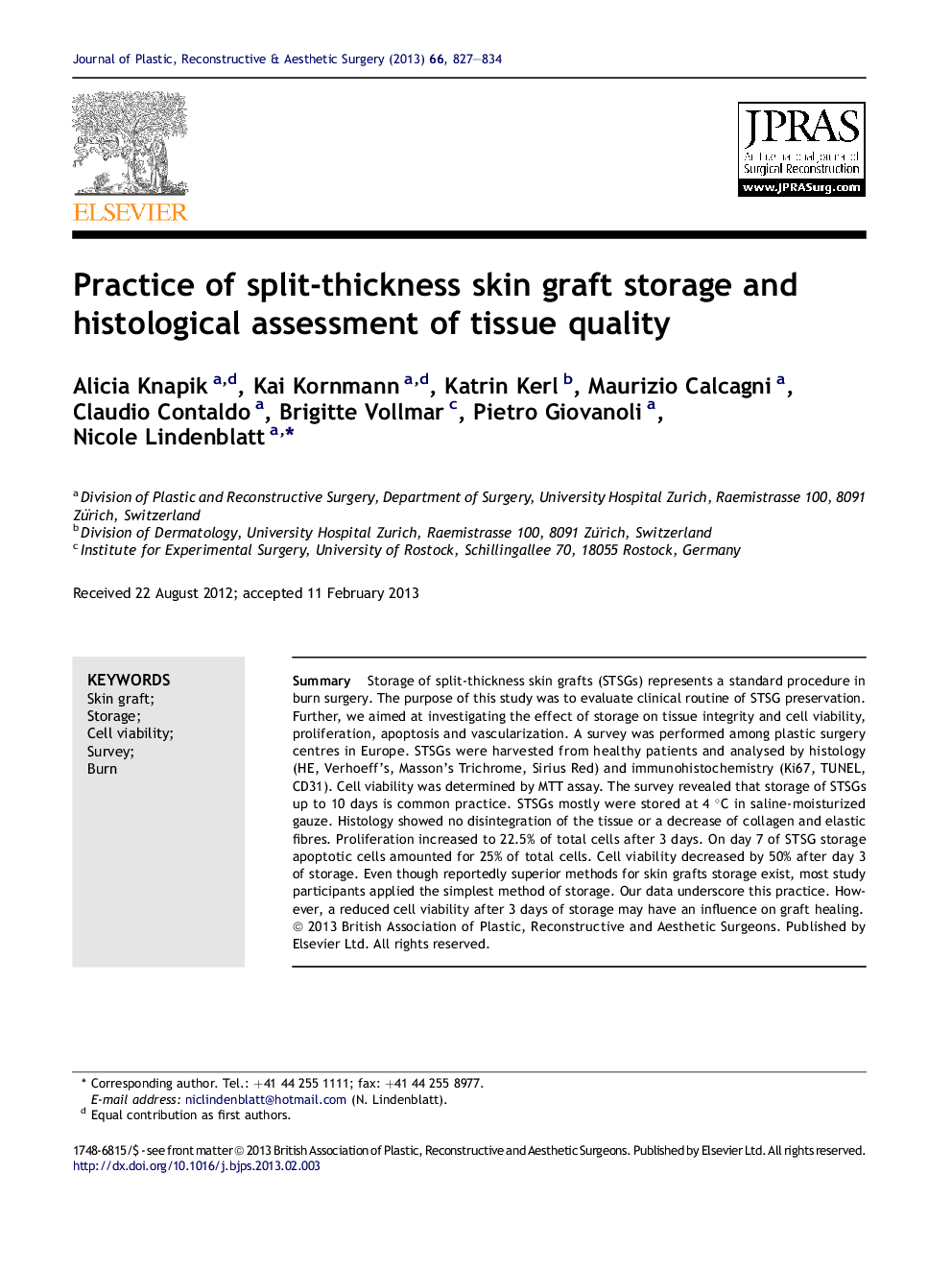| Article ID | Journal | Published Year | Pages | File Type |
|---|---|---|---|---|
| 4117723 | Journal of Plastic, Reconstructive & Aesthetic Surgery | 2013 | 8 Pages |
SummaryStorage of split-thickness skin grafts (STSGs) represents a standard procedure in burn surgery. The purpose of this study was to evaluate clinical routine of STSG preservation. Further, we aimed at investigating the effect of storage on tissue integrity and cell viability, proliferation, apoptosis and vascularization. A survey was performed among plastic surgery centres in Europe. STSGs were harvested from healthy patients and analysed by histology (HE, Verhoeff's, Masson's Trichrome, Sirius Red) and immunohistochemistry (Ki67, TUNEL, CD31). Cell viability was determined by MTT assay. The survey revealed that storage of STSGs up to 10 days is common practice. STSGs mostly were stored at 4 °C in saline-moisturized gauze. Histology showed no disintegration of the tissue or a decrease of collagen and elastic fibres. Proliferation increased to 22.5% of total cells after 3 days. On day 7 of STSG storage apoptotic cells amounted for 25% of total cells. Cell viability decreased by 50% after day 3 of storage. Even though reportedly superior methods for skin grafts storage exist, most study participants applied the simplest method of storage. Our data underscore this practice. However, a reduced cell viability after 3 days of storage may have an influence on graft healing.
